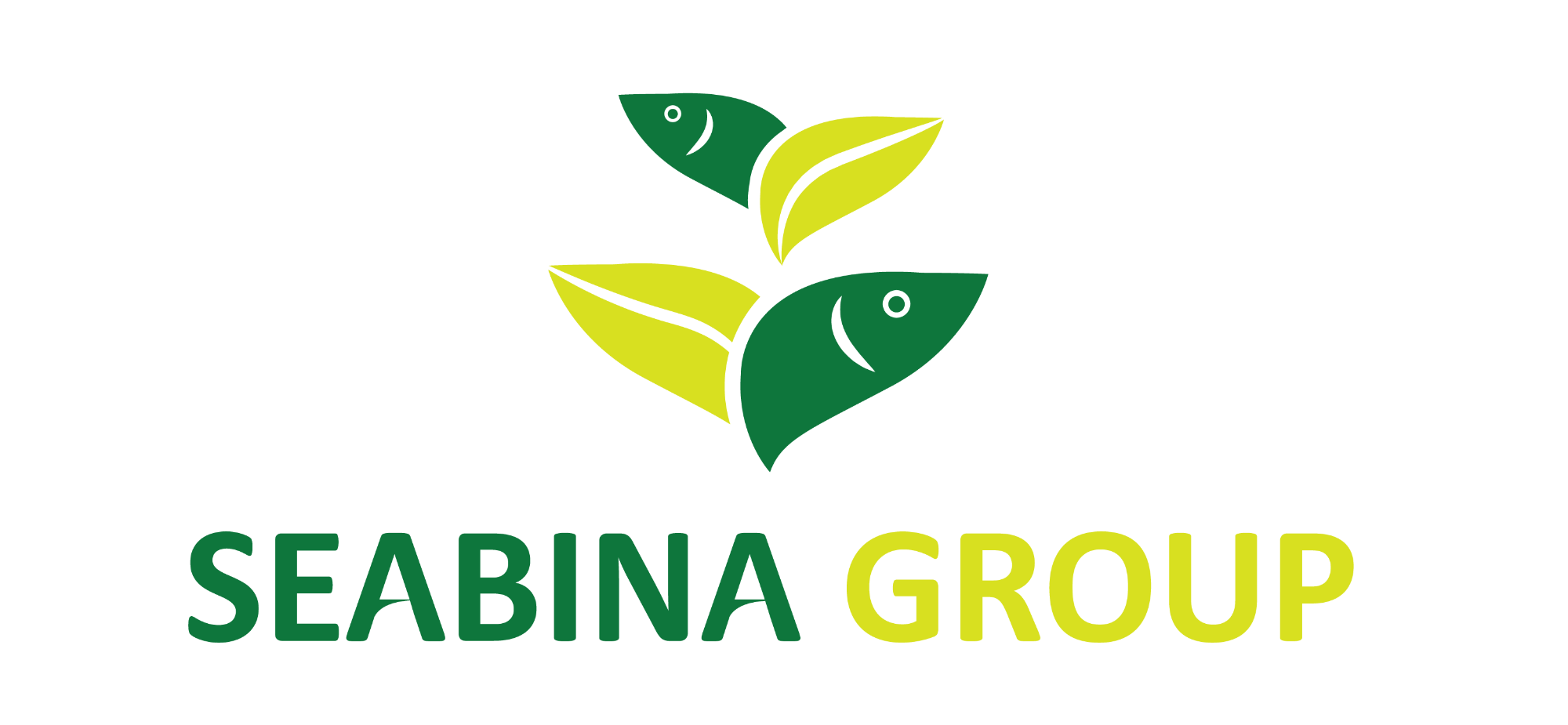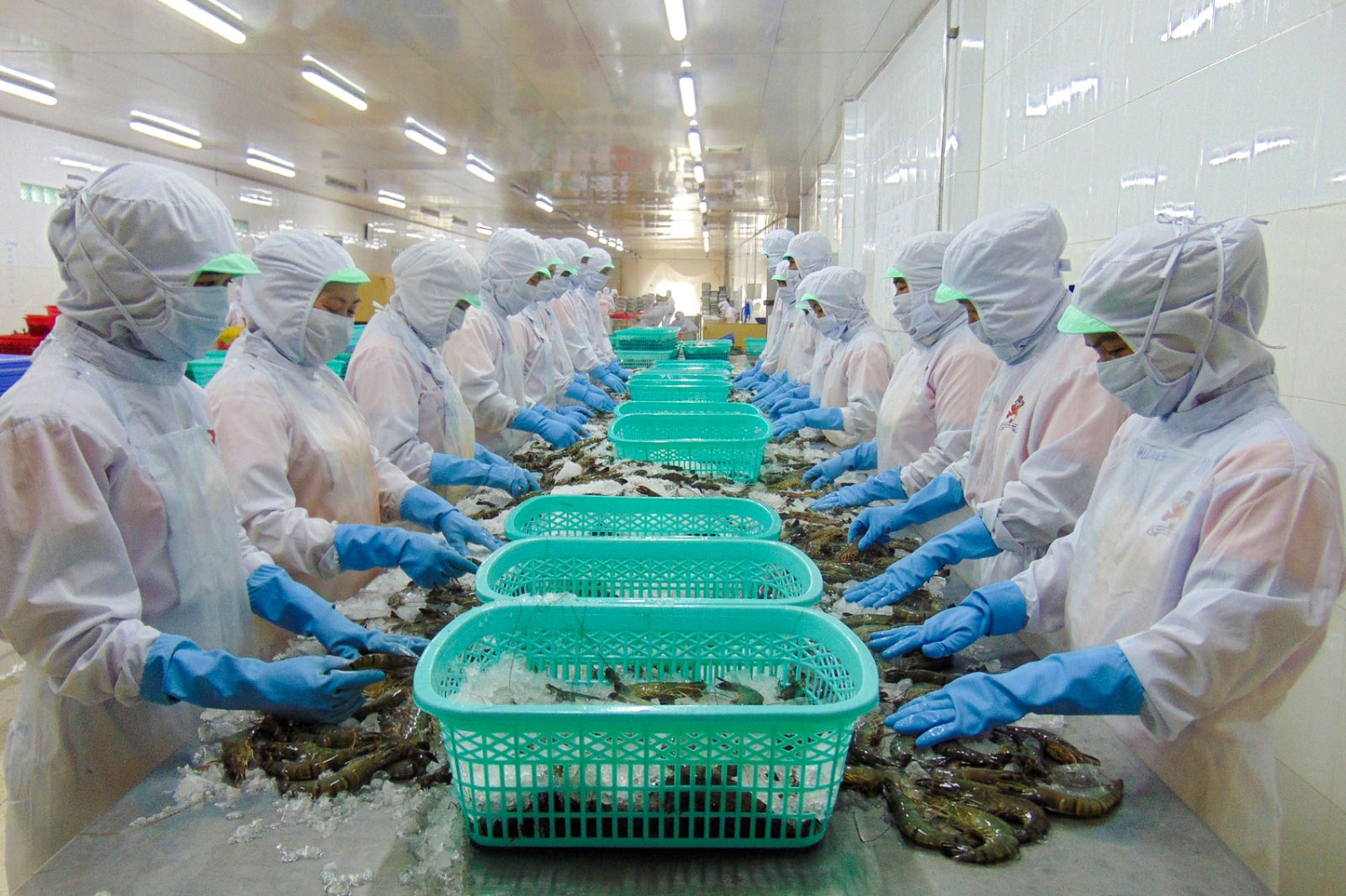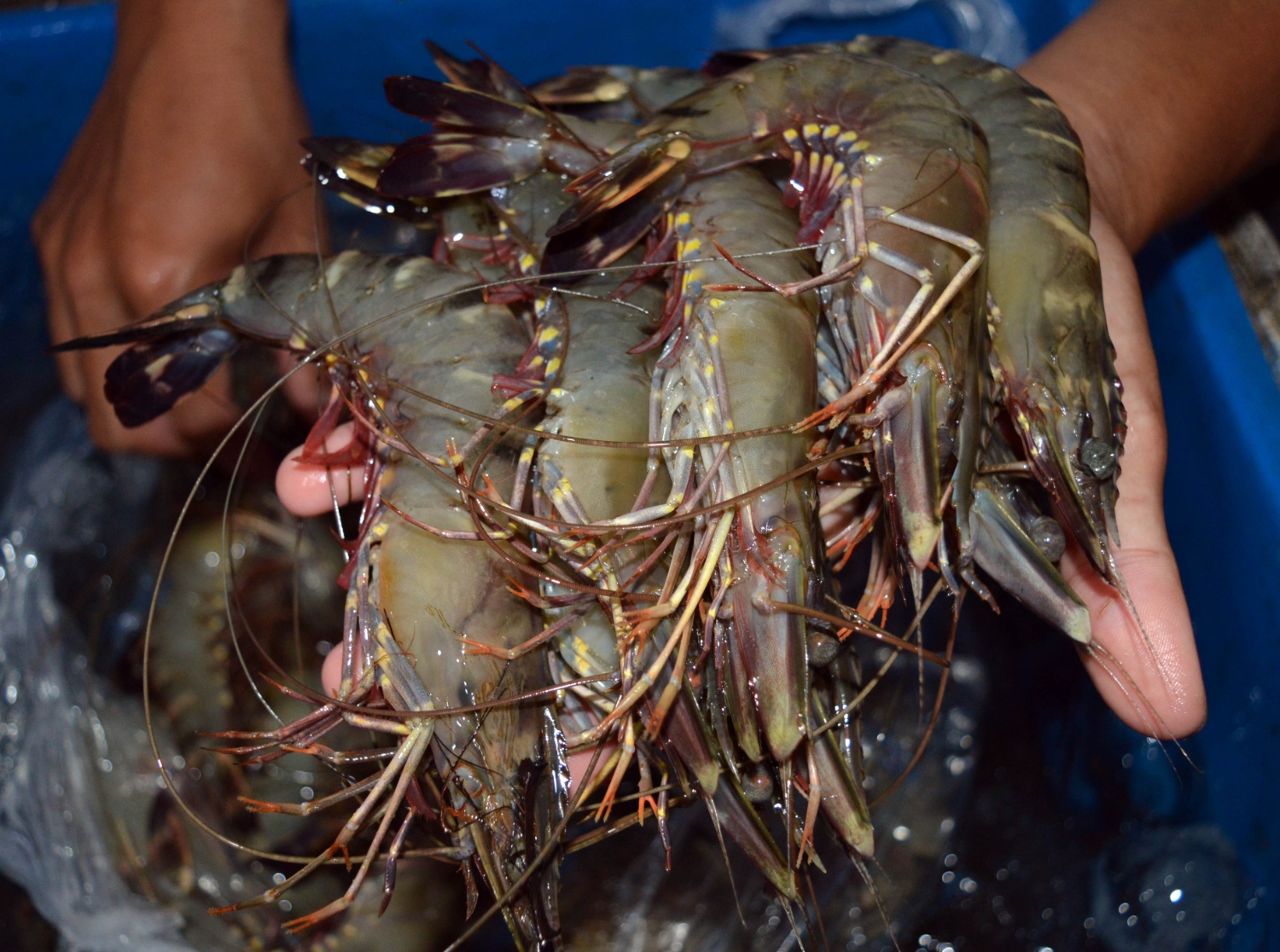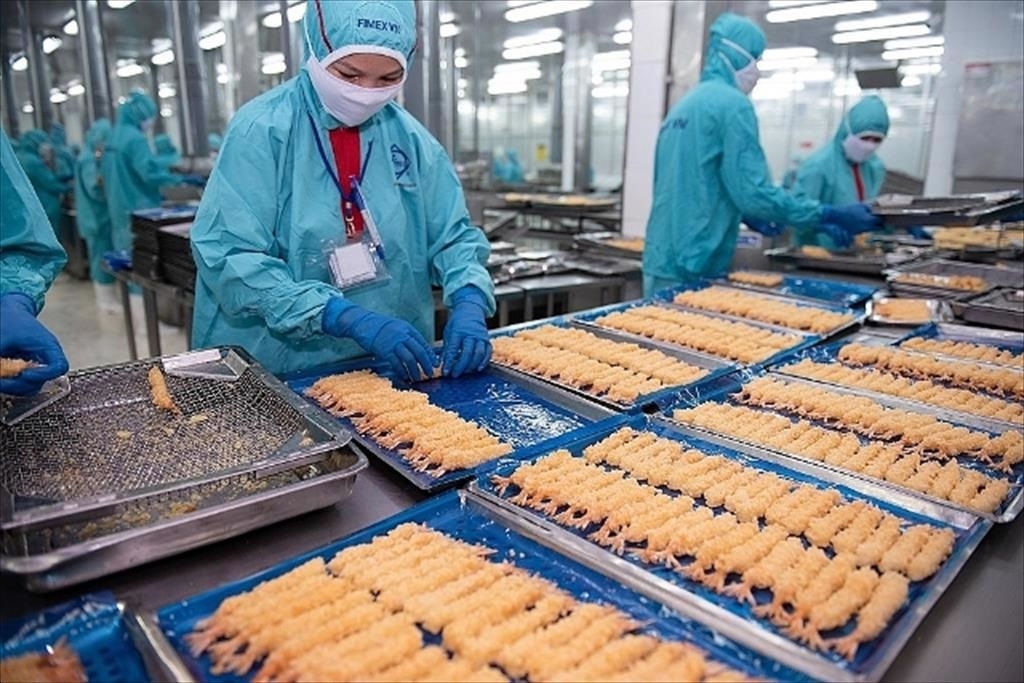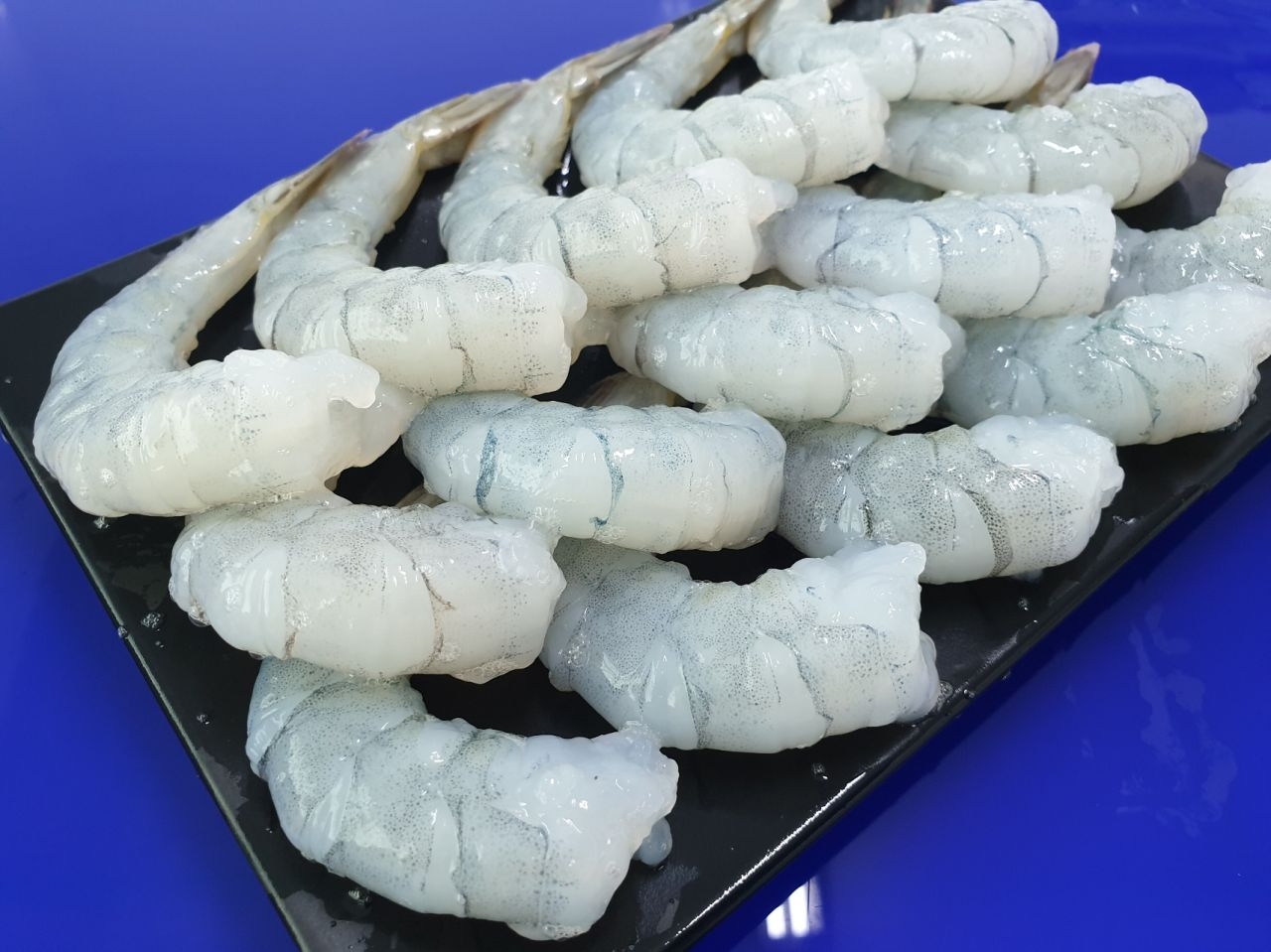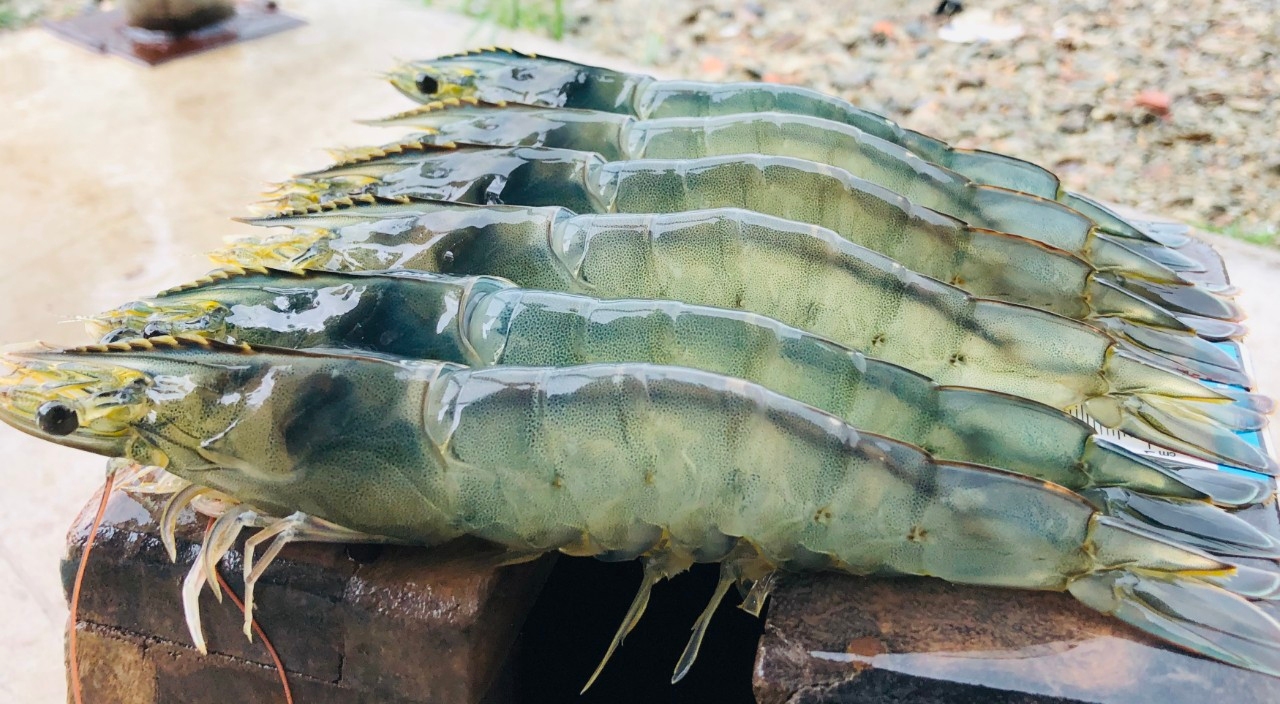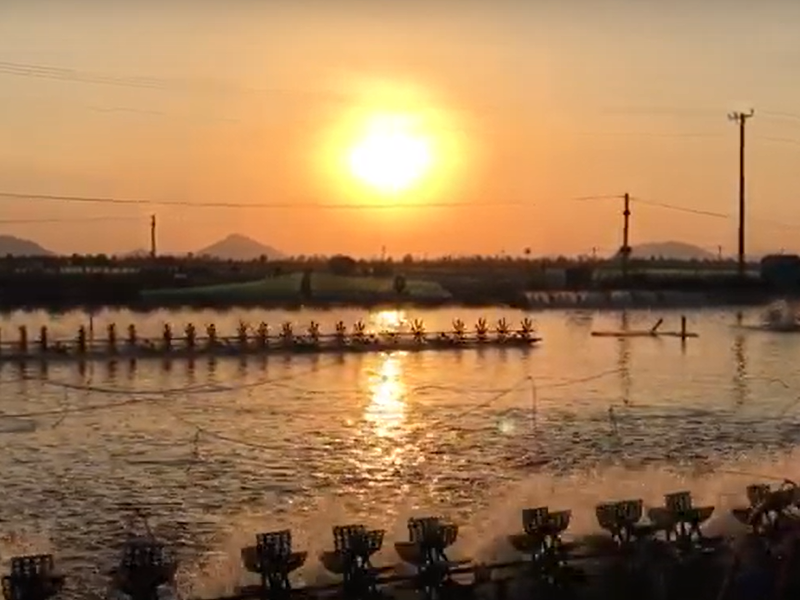
Shrimp prices rise again in Vietnam, and reach 12-month high in India
Recently, the shrimp market in Vietnam has witnessed strong growth in prices, bringing new opportunities for shrimp farmers and exporting enterprises.
Notably, shrimp prices in Vietnam have recorded an increase after a long period of stagnation, and this is not only an optimistic signal for the domestic seafood industry but also creates significant opportunities in the international market.
In particular, India - one of Vietnam's major competitors in the Chinese shrimp market is facing problems with exports. This fluctuation raises many questions about its causes and impacts on the Vietnamese shrimp industry. This article will analyze the shrimp price situation in Vietnam and India in depth, and point out the main factors affecting the increase in shrimp prices in Vietnam.
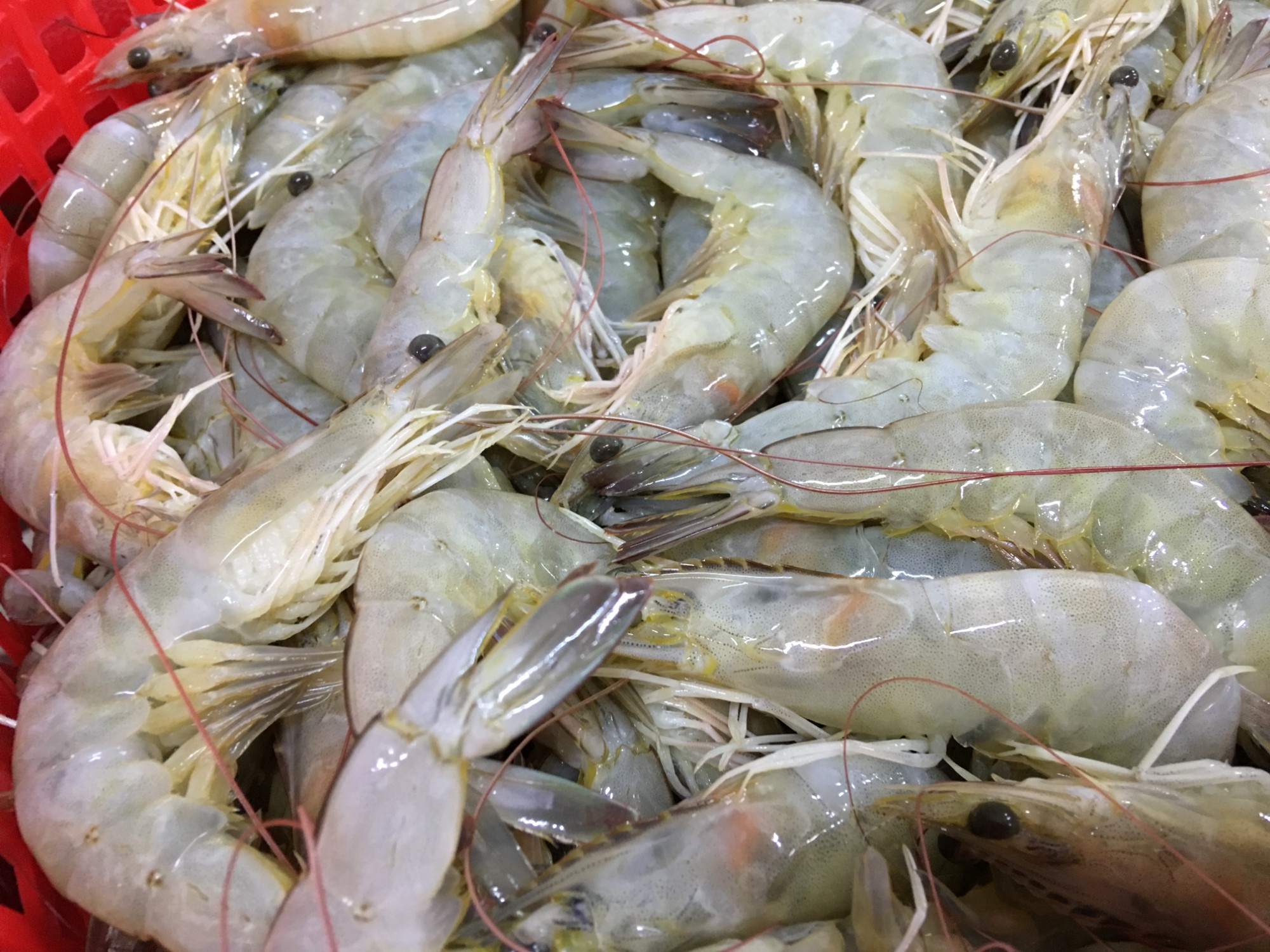
Overview of shrimp prices in Vietnam
Shrimp prices in Vietnam have experienced a period of positive growth in recent times. This price increase is not only the result of market demand, but also due to many other factors such as economic recovery, changes in global trade policies and competition from other countries.
According to information from the Vietnam Association of Seafood Exporters and Producers, in July 2024, Vietnam's shrimp export value reached 375 million USD, up 17% over the same period in 2023. This is the highest value recorded by the Vietnamese shrimp industry since the beginning of the year, and is also the month with the strongest growth since February this year. In the first 7 months of 2024, shrimp export turnover exceeded 2 billion USD, up 8% over the same period last year.
In July, Vietnam's shrimp exports to the US market increased by 16%, reaching 89 million USD. In the first 7 months of the year, shrimp export turnover to the US reached 391 million USD, up 4% over the same period last year.
For the Chinese market, Vietnam's shrimp exports have clearly recovered in July, with double-digit growth compared to the same period last year. In the first 7 months, shrimp exports to China reached 399 million USD, up 18% over the same period last year.
Main factors affecting the increase in shrimp prices in Vietnam
Increasing demand from major markets for year-end holidays
One of the main reasons for the increase in shrimp prices in Vietnam is the decrease in inventory and the strong growth in import demand to prepare for the year-end holidays from major markets such as China, the US and Japan. At the same time, raw shrimp prices from global producing countries, including Vietnam, are also on an upward trend, which has contributed to the increase in shrimp export prices.
In particular, China - a traditional market for Vietnamese shrimp - has increased imports again after trade and border restrictions were eased. This has created a big driving force for shrimp prices in Vietnam to grow, bringing higher profits to shrimp farmers as well as exporting enterprises.
Decline in output in rival countries
Currently, shrimp exporting enterprises are facing many challenges such as increased shipping costs and risks from conflicts around the world. In addition, shrimp farming activities in August and September may be affected by heavy rains, making the amount of commercial shrimp from now until the end of the year not expected to be abundant. At the same time, the decline in output from rival countries also reduces price competition pressure, giving Vietnam more advantages in negotiating and increasing product prices.
India and Ecuador, two of Vietnam's major competitors in China, are facing difficulties due to weather, disease, production management and especially strict inspections applied in China.
According to the latest information from the General Administration of Customs of China, in the first two months of this year, 43 batches of shrimp from Ecuador were rejected due to sulfite (preservative) content exceeding the permitted level. In addition, 16 batches of shrimp were rejected due to volatile basic nitrogen content exceeding the permitted limit, 31 batches of shrimp were rejected due to pathogens or incomplete quarantine.
In addition, shrimp imported from India was also rejected by GACC [General Admistration of Chinese Customs] due to the detection of antibacterial substances and pathogens. This has led to China (one of the world's largest import markets) refusing to import shrimp from these countries, opening up a great opportunity for Vietnamese shrimp to penetrate and dominate the market.
Development strategy for Vietnam's shrimp industry in the coming time
Lessons for businesses and recommendations for shrimp farmers
The problems that the Indian and Ecuadorian shrimp industries are facing such as the environment, antibiotics, additives, preservatives, etc. are also lessons for Vietnamese businesses to be cautious and strictly comply with the regulations of the import market and domestic regulations to avoid barriers and market protectionism.
It is recommended that shrimp farmers maintain psychological stability and avoid mass harvesting. Instead, farmers should maintain lower stocking density and extend the farming period so that shrimp reach larger sizes, ensure quality, food safety and thereby be able to sell at higher prices, helping to increase profits.
In addition, increasing stocking density to increase output is also an option, with gradual harvesting in batches. The remaining shrimp in the pond will have a favorable environment to grow faster. It is important that farmers coordinate closely with authorities to monitor raw shrimp price developments, analyze production efficiency and forecast market demand.
Sustainable development strategy for the shrimp industry
In the long term, to reduce production costs and create new momentum for the shrimp industry, promoting production linkage models according to the value chain needs more attention. At the same time, it is necessary to have a strategy to develop the feed and material processing industry for shrimp farming, aiming for self-sufficiency and reducing dependence on external supplies. In addition, improving the farming process, strictly controlling the quality of seeds and materials, as well as managing the farming environment well, are essential.
Source: Linkedin Long TK/Independent Fishery Professional
Other news
- Early stocking to get good price 21/12/2024
- Vietnamese Shrimp Industry Faces Many Challenges: Farmers Prefer Quality but Cheap Shrimp Seeds 01/08/2024
- Raw shrimp prices fall: Another challenge the shrimp industry must overcome 03/07/2024
- Storms in the shrimp industry may last in 2024 07/05/2024
- Vietnam's Seafood Exports Reach $2 Billion In Q1 03/04/2024
- King of shrimp industry profits in 2023 02/04/2024
- A difficult story for shrimp 11/03/2024
- Shrimp exports face a difficult problem 23/02/2023
- Vietnam’s shrimp exports reached 141 million USD in the first month of 2023 22/02/2023
- SEABINAGROUP CONTRIBUTES TO LOCAL COMMUNITY 13/01/2023
